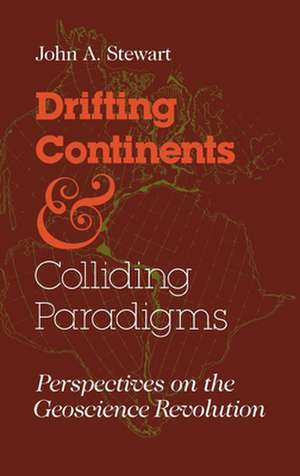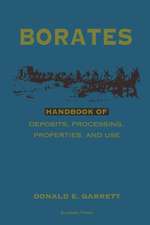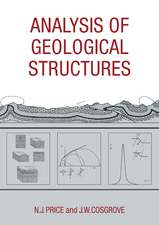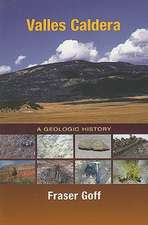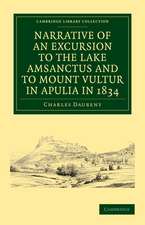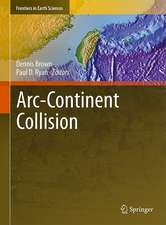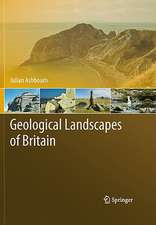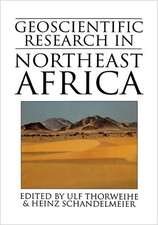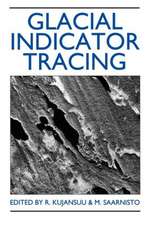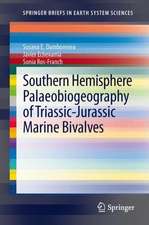Drifting Continents and Colliding Paradigms – Perspectives on the Geoscience Revolution
Autor John A. Stewarten Limba Engleză Hardback – 21 mai 1990
Preț: 320.58 lei
Nou
Puncte Express: 481
Preț estimativ în valută:
61.34€ • 64.21$ • 51.06£
61.34€ • 64.21$ • 51.06£
Carte tipărită la comandă
Livrare economică 31 martie-14 aprilie
Preluare comenzi: 021 569.72.76
Specificații
ISBN-13: 9780253354051
ISBN-10: 0253354056
Pagini: 304
Dimensiuni: 152 x 229 x 15 mm
Greutate: 0.61 kg
Editura: MH – Indiana University Press
Locul publicării:United States
ISBN-10: 0253354056
Pagini: 304
Dimensiuni: 152 x 229 x 15 mm
Greutate: 0.61 kg
Editura: MH – Indiana University Press
Locul publicării:United States
Cuprins
Preface
1. Perspectives on Scientific Revolutions
Diverse Perspectives on the Nature of Scientific Revolutions
Data and 'Theory Testing' in the History of Science
Overview of the Chapters
2. The Rise and Fall of Continental Drift Theory
Geological Thought in the Early 1900s
Continental Drift Theories
The Response to Wegener: 1920-1945
Discussion and Conclusions
3. Specialization without Integrating Theory: 1945-1959
Oceanography
Seismology
Geochronology
Geosyncline Theory and Continental Accretion
Paleomagnetism
Global Theories
Discussion and Conclusions
4. Plate Tectonics: Its Origin, Development, and Opponents
The Seafloor Spreading Hypothesis: 1960-1963
Growing Evidence for Seafloor Spreading: 1964-1966
The Rise and Partial Acceptance of Plate Tectonics: 1967-1970
Developments in the 1970s and Continuing Problems
Opposition By A Minority
Summary and Discussion
5. Philosophical and Historical Perspectives
Logical Empiricism
Critical Rationalism
Sophisticated Falsificationism
The 'Problem-Solving' Perspective
General Problems with the 'Rationalist' Perspectives
The Paradigm Perspective
Models and Analogies in Science
Conclusion and Overview: The 'Paradigm' Paradigm
6. Social Perspectives on Decision-Making in Science
Decisions in a Typical Research Project
Source and Iconic Models for Studying Decision-Making in Science
Decison-Making in Social Organizations
The Motivations of Scientists and the Context of Research
Sociological Perspectives on Science
Measuring the 'Global' Properties of Decision-Making in a Scientific Discipline
Summary and Conclusions
7. Quantitative Studies
Predicting the Influence of Scientific 'Conversations'
Assessing the Importance of Social and Scientific Interests
Predicting Published Opinions on Continental Drift Theory: 1900-1950
Conclusions
8. Reflections
A Recapitulation
The Nature of Scientific Knowledge and Suggestions for Future Studies
Reflexive Reflections
Postscript
Notes
Bibliography
Index
1. Perspectives on Scientific Revolutions
Diverse Perspectives on the Nature of Scientific Revolutions
Data and 'Theory Testing' in the History of Science
Overview of the Chapters
2. The Rise and Fall of Continental Drift Theory
Geological Thought in the Early 1900s
Continental Drift Theories
The Response to Wegener: 1920-1945
Discussion and Conclusions
3. Specialization without Integrating Theory: 1945-1959
Oceanography
Seismology
Geochronology
Geosyncline Theory and Continental Accretion
Paleomagnetism
Global Theories
Discussion and Conclusions
4. Plate Tectonics: Its Origin, Development, and Opponents
The Seafloor Spreading Hypothesis: 1960-1963
Growing Evidence for Seafloor Spreading: 1964-1966
The Rise and Partial Acceptance of Plate Tectonics: 1967-1970
Developments in the 1970s and Continuing Problems
Opposition By A Minority
Summary and Discussion
5. Philosophical and Historical Perspectives
Logical Empiricism
Critical Rationalism
Sophisticated Falsificationism
The 'Problem-Solving' Perspective
General Problems with the 'Rationalist' Perspectives
The Paradigm Perspective
Models and Analogies in Science
Conclusion and Overview: The 'Paradigm' Paradigm
6. Social Perspectives on Decision-Making in Science
Decisions in a Typical Research Project
Source and Iconic Models for Studying Decision-Making in Science
Decison-Making in Social Organizations
The Motivations of Scientists and the Context of Research
Sociological Perspectives on Science
Measuring the 'Global' Properties of Decision-Making in a Scientific Discipline
Summary and Conclusions
7. Quantitative Studies
Predicting the Influence of Scientific 'Conversations'
Assessing the Importance of Social and Scientific Interests
Predicting Published Opinions on Continental Drift Theory: 1900-1950
Conclusions
8. Reflections
A Recapitulation
The Nature of Scientific Knowledge and Suggestions for Future Studies
Reflexive Reflections
Postscript
Notes
Bibliography
Index
Recenzii
"The book provides an excellent historical summary of the debates over continental drift theory in this century." - Contemporary Sociology
"This is a useful discussion of the way that science works. The book will be of value to philosophers of science . . . " - Choice
" . . . will find an important place in university and department libraries, and will interest afficionados of the factual and intellectual history of the earth sciences." - Terra Nova
" . . . an excellent core analysis . . . " - The Times Higher Education Supplement
" . . . an ambitious and important contribution to the new sociology of science." - American Journal of Sociology
" . . . Stewart's book is a noble effort, an interesting and readable discussion, and another higher notch on the scoreboard of critical scholarship that deserves wide examination and close attention." - Geophysics
"This is a useful discussion of the way that science works. The book will be of value to philosophers of science . . . " - Choice
" . . . will find an important place in university and department libraries, and will interest afficionados of the factual and intellectual history of the earth sciences." - Terra Nova
" . . . an excellent core analysis . . . " - The Times Higher Education Supplement
" . . . an ambitious and important contribution to the new sociology of science." - American Journal of Sociology
" . . . Stewart's book is a noble effort, an interesting and readable discussion, and another higher notch on the scoreboard of critical scholarship that deserves wide examination and close attention." - Geophysics
